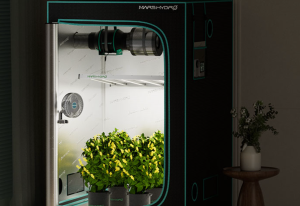
The best memory-improvement techniques: It can be a heartbreaking moment. The name of the person you need to introduce has entirely escaped your memory. You might be in a large meeting, and you have to introduce someone. But the important information isn’t there. This may sound familiar. Most of us have experienced the pit-of-the stomach feeling when our memories fail.
In today’s information-rich, fast-paced world, a strong memory is essential. This can make you more organized, confident, creative, and more efficient at learning. Many memory-boosting techniques have been created over the years, as many of the systems that ancient Greeks taught to their students were effective in recalling key information.
What are Mnemonics?
Mnemonic is another name for memory tool. Mnemonics allow you to repackage information and help your brain find it quickly again. Consider some of the mnemonics that you have heard over the years. Mnemonics can help you remember facts, rules, and spellings. Mnemonics use rhythms and rhymes to help hard-to-learn information stay in our brains. Many of them also depend on images, feelings, patterns, and other key features of the more advanced memory techniques.
Designing effective mnemonics
When you begin to invent mnemonics on your own, remember three other principles: imagination and association.
Imagination: Create images that are engaging, vivid, and rich enough for your memory. It could be as simple as visualizing a situation to help you remember it and re-use it. Or, creating a new one that will help guide your writing, speech, or other future activities.
Association – Make the most of your brain’s ability to link ideas. You can link different pieces of information together to make it easier for you to remember them all. This could help you to remember what items you need to bring on a trip. You can also pair two ideas together so that one reminds you of the other. You might imagine your colleague using a microphone to remember his name.
Location: Use your real-world memories to help you recall new material. You can remember the layout of your house so why not “hold” the items you are trying to learn in these rooms?
Designing effective mnemonics
When you begin to invent mnemonics on your own, remember three other principles: imagination and association.
Imagination: Create images that are engaging, vivid, and rich enough for your memory. It could be as simple as visualizing a situation to help you remember it and re-use it. Or, creating a new one that will help guide your writing, speech, or other future activities.
Association – Make the most of your brain’s ability to link ideas. You can link different pieces of information together to make it easier for you to remember them all. This could help you to remember what items you need to bring on a trip. You can also pair two ideas together so that one reminds you of the other. You might imagine your colleague using a microphone to remember his name.
Location: Use your real-world memories to help you recall new material. You can remember the layout of your house so why not “hold” the items you are trying to learn in these rooms?
The best memory-improvement techniques
The Main Memory Techniques
These three principles have been used to create a variety of memory techniques. These characteristics may be classified into three types:
Image clues:
These are memory tools that allow you to visualize ideas using pictures. Image clues, just like icons and logos, can stimulate your brain to consider complex ideas. Memorable, multisensory images can be associated with others in sequences or pairs, or placed in your “mind’s eye” around familiar locations.
Storytelling strategies
These are memory tools that take advantage of the fact that stories that are well told are instantly memorable. Storytelling strategies enable you to connect individual image clues to long chains in order to recall lists, processes, or all the points that you want to make in presentations and essays. A setting that is related to your subject matter can give you an additional memory boost.
Spatial systems
These are memory tools that allow you to use all of the real-world travels you know to store new data. These could be your commute from home to work or a favorite walk in the countryside.
You are also able to navigate many buildings and imagine their layouts.
Spatial systems can be used to identify key images and place them in a particular location or to see them placed around familiar routes. You can use your imagination to “find” images that you have lost, which will help you quickly recall important information.
You’ll quickly be able to improve your memory by simply starting to experiment with these mnemonic principles.
Creating Rich, Reliable Memories
You can choose the best strategy for yourself by examining the common features of memory techniques that are well-known. Let’s take a look at four important aspects: pictures; senses; emotions; and patterns.
Images
We are particularly adept at recognising pictures that we have seen before. Just think about how many logos, symbols, and signs you can recognize in a matter of seconds. To help you remember, you can quickly invent your own images. Spend a few seconds picturing a person you are meeting, or anything that could help you remember their name.
Senses
To learn and remember, use all your senses. Think beyond visualizing the items you will find at the grocery store. Imagine touching, tasting, and smelling them.
Assume you are learning about a new concept in your workplace. It might be possible to build a physical model. You can give your memory multiple sensory routes that lead back to the original information.
Emotions
You can make even serious and important material funny by using your imagination. You’ll have a better chance of recalling your images if you make them exciting, bizarre, and wonderful. Playfulness and mischief are good qualities. It is no accident that it is difficult to forget rude rhymes!
Highlight the most interesting aspect of a meeting to help you remember it. Consider whether the name of someone you are meeting is “matching” your character.
Patterns
When you use rhymes or rhythms to give information a pattern, or when you turn sets of letters into mnemonic phrases or words, it gives them a pattern. This is illustrated by the SMART Goals acronym. The phrase Every Good Boy Deserves football, for remembering notes along the lines of EGBDF, is another example.
You’ll see that some memory techniques use spatial patterns in order to store large amounts of information. You could use rhythmic repetitions to retain a phone number for a brief time. You can also experiment with different ways to organize and arrange your notes while taking notes.







